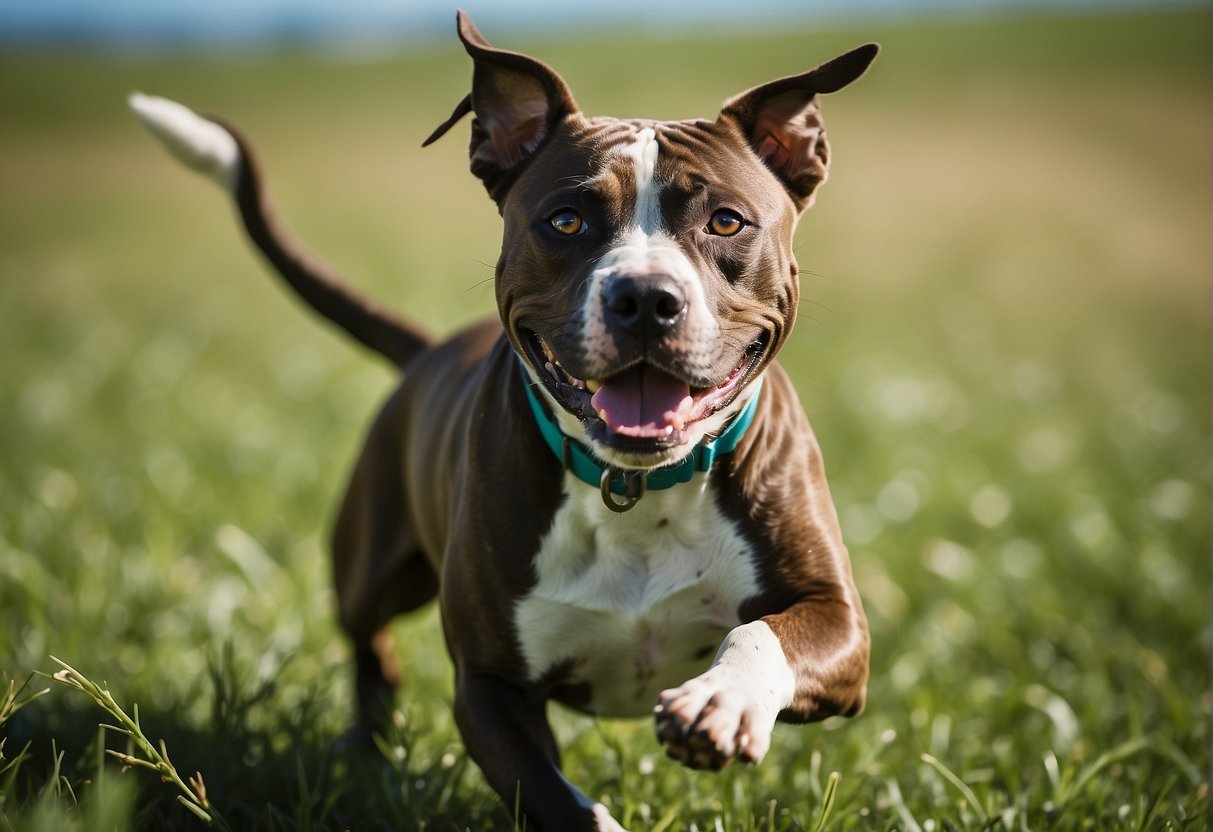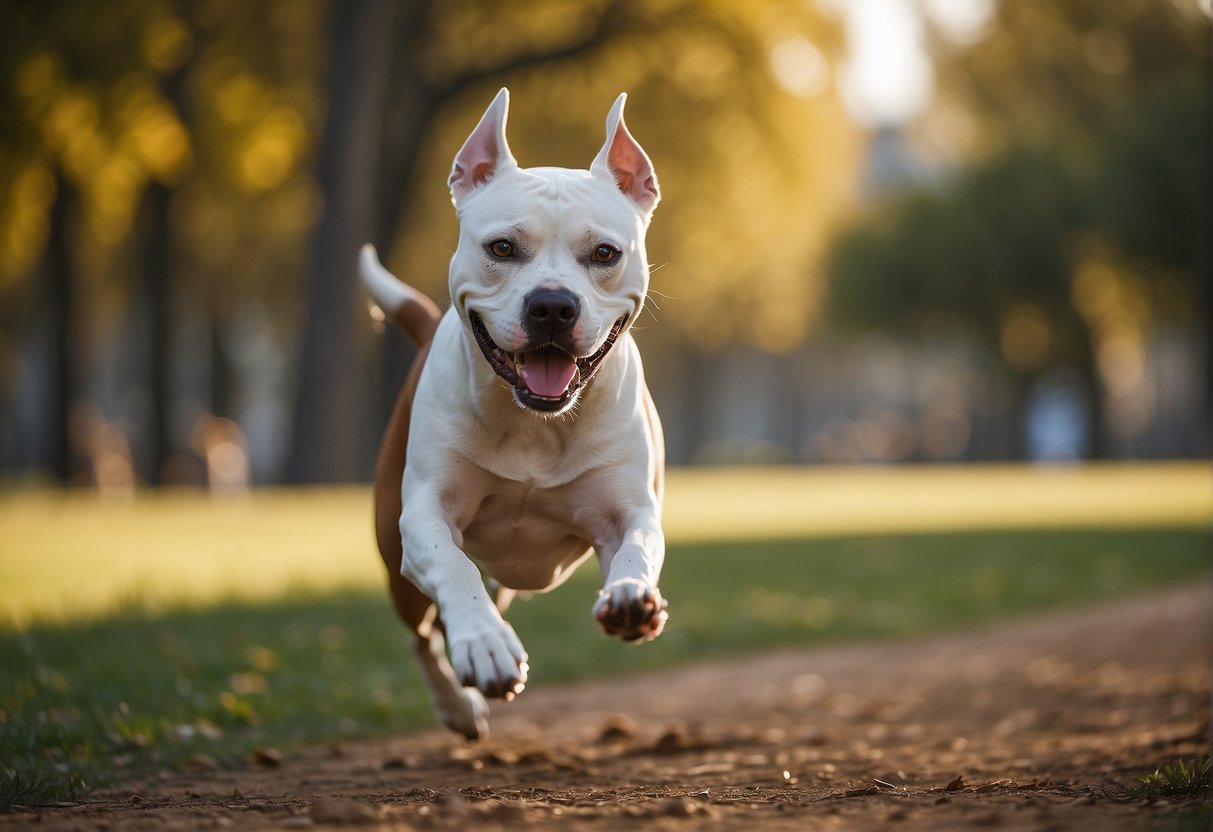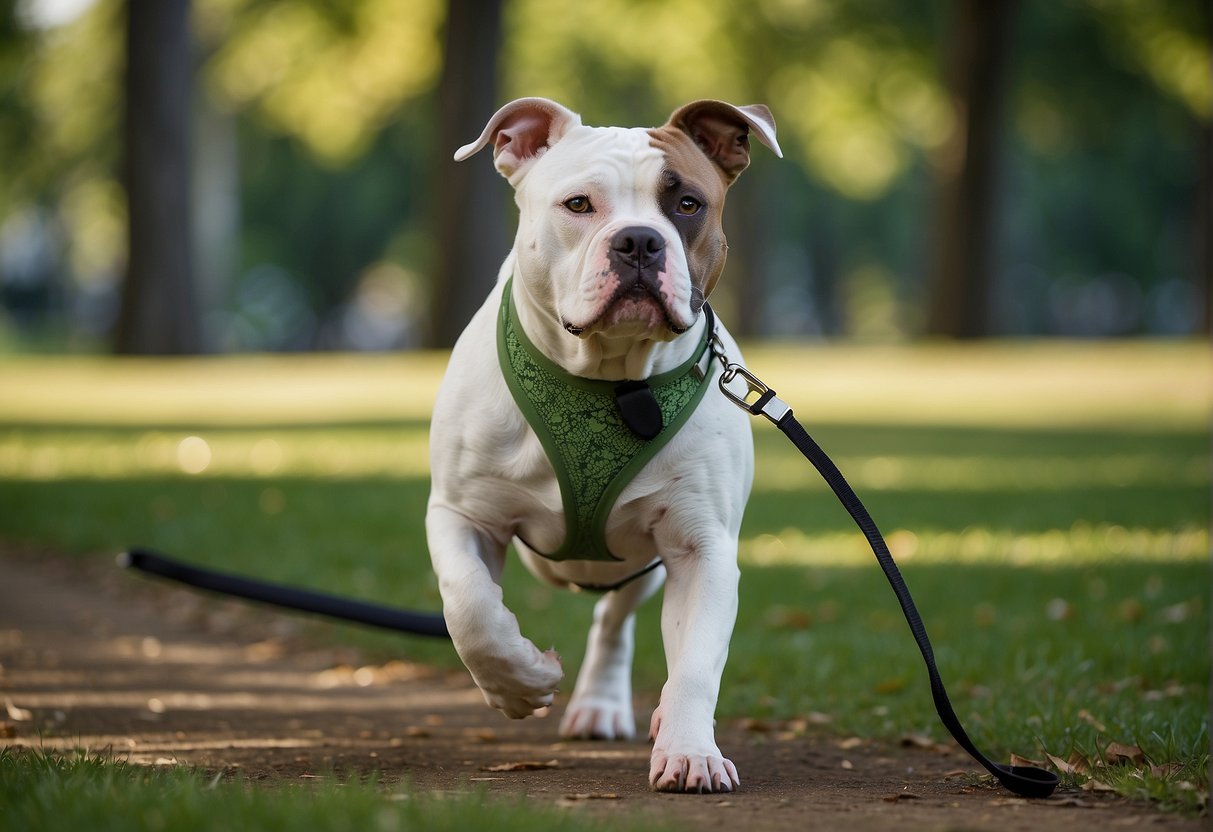American Staffordshire Terriers are known for their strength and agility, but like many breeds, they can be susceptible to joint issues.
Maintaining joint health is crucial for these spirited dogs to live active and happy lives.
Natural strategies to support their joints can be especially appealing to pet owners who are wary of long-term medication side effects.
A well-rounded approach includes nutrition, exercise, and supplements that can promote joint health and alleviate discomfort.

Natural remedies prioritize the American Staffordshire Terrier’s overall well-being while targeting joint health specifically.
Effective strategies include a balanced diet rich in omega fatty acids, which are known to support joint function.
Regular, low-impact exercises help keep their joints in good shape, while also preventing excessive weight gain that can put more strain on joints.
Additionally, natural supplements containing glucosamine and chondroitin provide the building blocks for cartilage repair and maintenance.
For the American Staffordshire Terrier experiencing joint pain, simple modifications to their environment can make a significant difference.
Orthopedic dog beds offer much-needed support for a restful sleep, improving joint health over time.
Ensuring that living spaces are slip-resistant helps in preventing further joint injury.
Together, these natural strategies form a compassionate approach to joint care, allowing these beloved dogs to thrive throughout their lives.
Breed Characteristics and Health Overview

In understanding the American Staffordshire Terrier, commonly known as Amstaffs, it’s crucial to consider both the breed’s distinctive traits and the health challenges they may encounter throughout their life.
Understanding the American Staffordshire Terrier
The American Staffordshire Terrier is a muscular, medium-to-large sized breed renowned for its agility, strength, and confidence.
They possess a broad, square head and a short coat that contributes to their striking appearance.
Characteristically loyal and affectionate towards their families, Amstaffs often display a courageous and tenacious temperament true to their terrier lineage.
Common Health Concerns in Amstaffs
Amstaffs are prone to certain health problems that owners should be vigilant about:
- Hip Dysplasia: A condition where the hip joint doesn’t fit together perfectly, which can lead to arthritis or lameness.
- Heart Issues: This breed may develop heart conditions, such as congenital heart defects, so regular veterinary check-ups are essential.
- Hypothyroidism: This is a thyroid hormone deficiency that can affect your Amstaff’s metabolism, often characterized by symptoms like lethargy, weight gain, and coat problems.
Preventive measures and regular health screenings can help manage these conditions and contribute to the wellbeing of American Staffordshire Terriers as they age.
Optimal Nutrition for Joint Health

Nutrition plays a critical role in maintaining joint health for American Staffordshire Terriers, with a balanced diet enriched with specific nutrients that can help mitigate joint pain and support overall mobility.
Essential Diet Components
American Staffordshire Terriers can benefit from a diet that is rich in specific nutrients to support their joints.
Protein is fundamental for muscle maintenance and repair, and should come from high-quality sources to ensure they’re easily digestible.
Fatty acids, especially omega-3s like EPA (eicosapentaenoic acid), are known for their anti-inflammatory properties which can be crucial for dogs with arthritis.
A proper balance of vitamins and minerals is also important.
For instance, vitamin C and E have antioxidant properties, while minerals like calcium and phosphorus play a role in bone health.
Including dog food that contains glucosamine and chondroitin, which are natural compounds found in cartilage, can help support repair of joint tissues.
Dog breed plays a role in nutritional requirements; due to potential predispositions towards joint issues, an American Staffordshire Terrier’s diet should especially focus on ingredients that support joint health.
Special Considerations for Amstaffs
When it comes to American Staffordshire Terriers, maintaining a healthy weight is paramount to reduce pressure on their joints and minimize the risk of obesity, a known contributor to joint problems like arthritis.
Excess fat can also exacerbate inflammation, leading to increased pain.
In addition to their regular food, joint supplements containing glucosamine and chondroitin can be introduced as part of an American Staffordshire Terrier’s diet to provide additional support.
Due to their robust nature, these dogs may benefit from a nutritional balance tailored to sustain their liver health too, as the liver plays a significant role in metabolizing nutrients essential for joint health.
To support Amstaffs with their unique needs, owners should consider tailored nutrition plans which include both commercial dog foods designed for joint health or all-natural diets with the necessary components.
It’s also beneficial to integrate foods that are naturally high in beneficial compounds, such as certain types of fish for fatty acids, and to monitor the balance of calories to prevent weight gain.
The Role of Physical Activity and Training

Physical activity and training are pivotal in maintaining joint health and behavioral balance in American Staffordshire Terriers.
Regular exercise keeps their joints strong, while targeted training helps manage their spirited energy and innate athletic tendencies.
Exercises to Strengthen Joints
American Staffordshire Terriers are muscular dogs with a notable level of energy.
Activities such as swimming can be particularly beneficial for their joints, providing resistance that strengthens muscles without putting strain on the joints due to its low-impact nature.
Agility training, incorporating obstacles like tunnels and jumps, offers a structured way to enhance their muscular strength, control, and agility, ensuring their joints are supported by strong muscles.
- Swimming: Excellent for low-impact joint exercise.
- Agility:
- Tunnels: Encourages controlled movement and flexibility.
- Jumps: Builds leg muscle and joint resilience.
Training for Behavioral Balance
Training sessions are crucial for socialization and establishing control over behavior, leading to a more balanced temperament.
For American Staffordshire Terrier puppies, consistent training helps channel their energy and curbs any stiff or undesirable behaviors.
Incorporating tricks that require balance and coordination not only stimulates them mentally but also physically challenges them, further supporting joint health.
- Socialization Training: Regular interaction with people and other dogs to enhance social skills.
- Obedience Training: Essential commands like sit, stay, come to foster behavioral control.
Tailoring exercise and training to an American Staffordshire Terrier’s activity level ensures that they grow into well-adjusted, healthy adult dogs.
It is important to remember that puppies may have different exercise needs and tolerances compared to adults.
Daily Care for Joint Health

To ensure the joint health of an American Staffordshire Terrier, daily care routines need to focus on effective grooming practices and early detection of potential joint issues.
Effective Grooming Practices
Proper grooming contributes significantly to the overall well-being of an American Staffordshire Terrier.
Regular brushing keeps their coat clean and removes excess hair, which can help in spotting any signs of skin issues that could indicate allergies or sensitivities.
They should bathe only as needed, using shampoo formulated for dogs with sensitive skin to prevent irritation.
Ensuring their nails are trimmed regularly is also crucial; overgrown nails can lead to discomfort and ultimately impact a dog’s gait and joint health.
Cleanliness around the home, especially where the dog sleeps and eats, helps minimize the risk of them developing allergies that could disguise or exacerbate joint issues.
Recognizing Early Signs of Joint Issues
A keen eye on their behavior and physical condition can reveal the early signs of joint problems.
Changes in their temperament, such as increased irritability, may signal discomfort.
One should observe if the dog is loving and active or if they hesitate during personal training sessions or play.
If the terrier starts to show signs of discomfort when getting up, limping, or reluctance to climb stairs, these might be early indicators of joint issues.
It’s essential to catch these signals early and consult a veterinarian, as conditions like arthritis can be managed more effectively with early intervention.
Regular vet check-ups and weight management are part of preventative care that can help sustain the joints’ health.
Supplements and Treatments

For the well-being of an American Staffordshire Terrier, regularly incorporating joint supplements can prevent and alleviate joint-related discomfort.
When symptoms of joint pain arise, a veterinarian can offer a range of therapeutic options.
Natural Supplements for Prevention and Relief
American Staffordshire Terriers may benefit from daily supplementation to support joint health.
A supplement plan often includes glucosamine and chondroitin, both of which are known to promote cartilage health and reduce inflammation.
As these dogs are susceptible to joint issues, integrating antioxidants through natural sources or treats can help neutralize free radicals and subsequently reduce joint deterioration.
| Natural Supplements | Benefits |
|---|---|
| Glucosamine | Supports cartilage health and reduces pain |
| Chondroitin | Aids in maintaining elasticity of joints |
| Antioxidant-rich Treats | Help minimize oxidative stress on joints |
Choosing the right supplements can make a significant difference.
It’s essential to select those specifically tailored for the breed, as they’ll contain a blend of multiple active ingredients suited for their unique needs.
For instance, natural health supplements for American Staffordshire Terrier dogs often include blends designed to enhance skin, coat, and bone development, in addition to targeting joint health.
Veterinary Interventions and Therapies
When prevention is not enough and an American Staffordshire Terrier starts showing signs of joint pain, seeking veterinary advice is crucial.
A vet may recommend a range of treatments such as physical therapy, acupuncture, or even surgical interventions in severe cases.
Additionally, they can prescribe medication to manage discomfort.
Non-steroidal anti-inflammatory drugs are commonly used to alleviate pain and swelling but must be administered in accordance with a veterinarian’s guidance to avoid potential side effects.
Here are some interventions that may be suggested:
- Physical Therapy: Enhances joint function and mobility.
- Acupuncture: Traditional method that can provide pain relief.
Pet parents can also explore 10 natural ways to relieve joint pain, which emphasize maintaining a healthy weight and regular movement to keep joints supple.
Regular check-ups with the veterinarian ensure that the American Staffordshire Terrier receives a timely diagnosis and the most appropriate treatments to sustain their quality of life.















